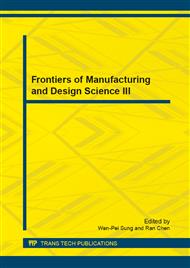p.121
p.126
p.131
p.136
p.141
p.147
p.152
p.156
p.163
Brazilian Geological Sandstone Characterization and its Utilization as Aggregate in Structural Concrete
Abstract:
The sandstone extraction is an essential activity to the production of specific products. It is employed in the civil construction sector. However, there is still a deficiency in physical and geological characterization. This research develops two experiments in the sandstone matrix located in São Carlos region (City of São Paulo State – Brazil). The first experiment is related to the geological aspect of the specific sandstone. It identified the geographic location and investigated the porosity and absorption rates of the Brazilian sandstone rock, besides verifying its compressive strength. The purpose was to identify and evaluate possibilities of sandstone use in the structural concrete composition. The second experiment tested the concrete strength with this aggregate. Some quantities of crushed sandstone were used as fine aggregate in the manufactured concrete. The experiments presented sandstone properties and sandstone aggregate possibilities in concrete composition. The present study is a result of an undergraduate project, aiming to contribute with new information on the Brazilian sandstone characterization and concrete strength application with the sedimentary aggregate. This work showed some possibilities to use this type of yellow and red sandstone as aggregate.
Info:
Periodical:
Pages:
141-146
Citation:
Online since:
December 2012
Authors:
Keywords:
Price:
Сopyright:
© 2013 Trans Tech Publications Ltd. All Rights Reserved
Share:
Citation:


